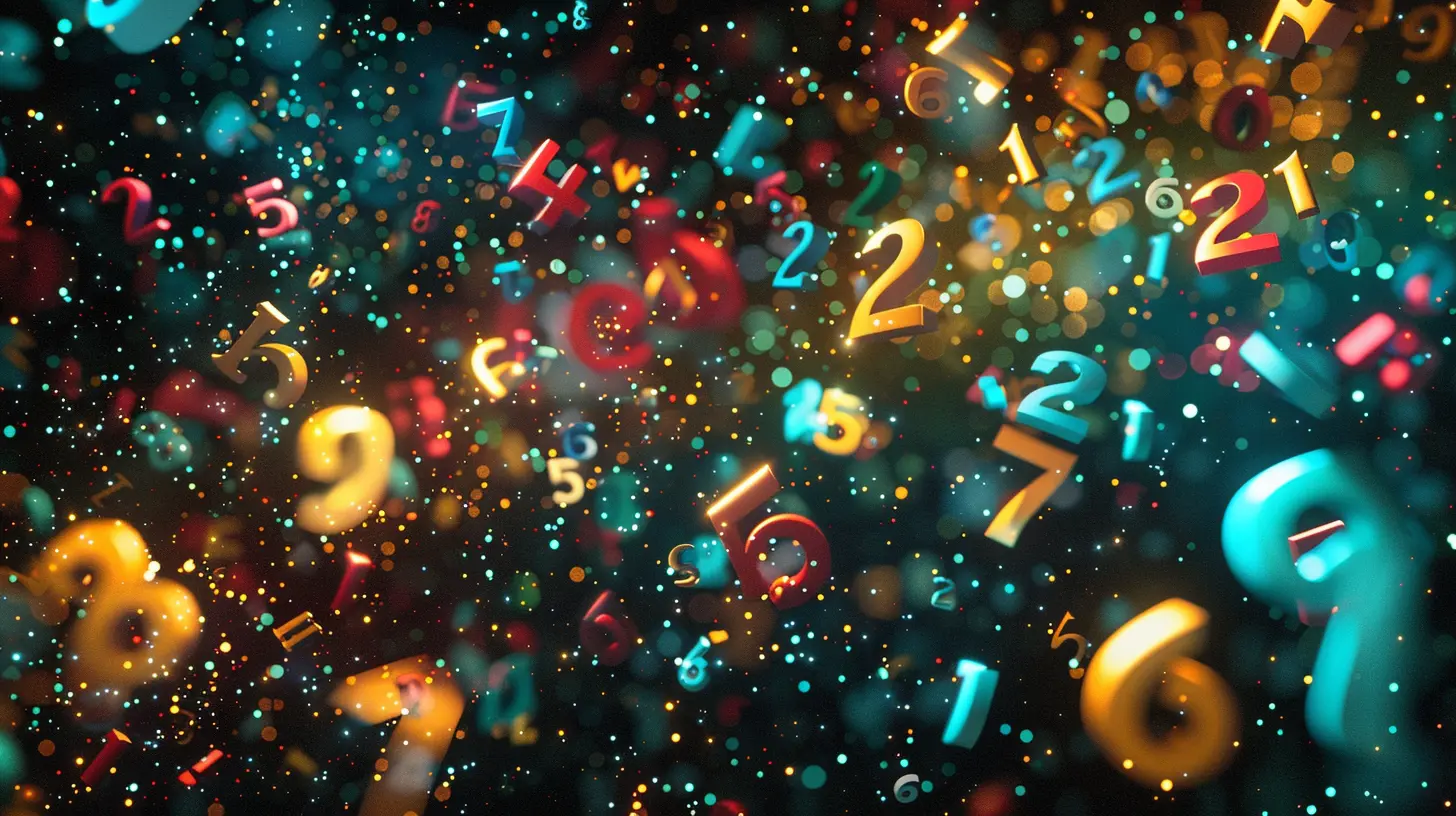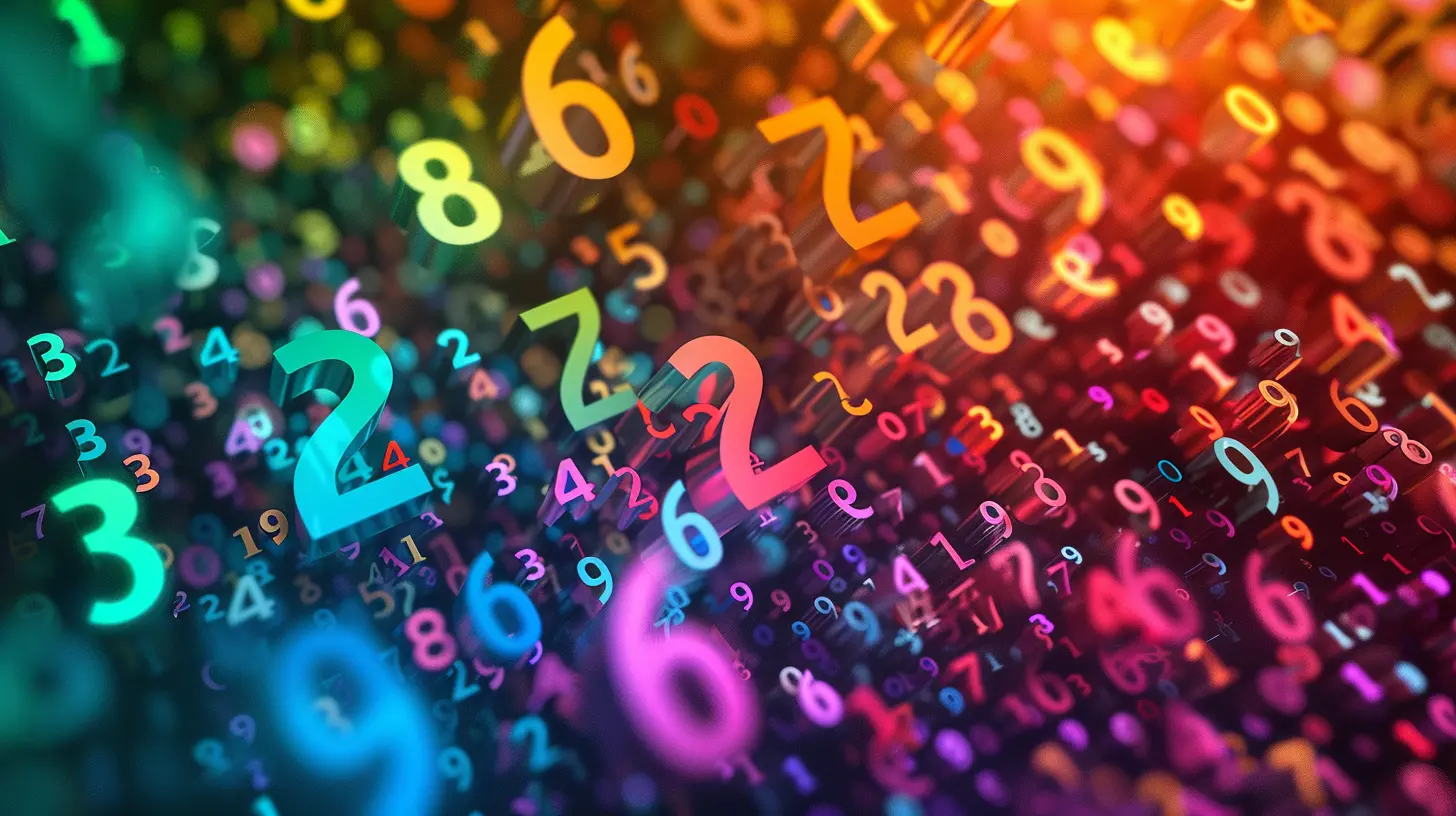Exploring the Fascinating World of Prime Numbers
4 June 2025
Prime numbers—simple yet incredibly mysterious. They are the backbone of mathematics, the unsung heroes of cryptography, and the puzzle pieces of number theory. But what exactly makes them so special? Why do mathematicians obsess over them? And how do they shape the digital world we live in? Buckle up because we’re diving deep into the fascinating world of prime numbers!

What Are Prime Numbers?
Alright, let's start with the basics. A prime number is any natural number greater than 1 that has only two factors: 1 and itself. In other words, you can't divide it evenly by any other number.Take 7, for instance. Try dividing it by any number other than 1 or 7—doesn’t work, right? That’s because 7 is prime. Now try 9—you can divide it by 3, which disqualifies it. That’s what makes a number prime or composite (non-prime).

Why Are Prime Numbers So Special?
At first glance, prime numbers seem like just another mathematical concept. But in reality, they are the building blocks of all numbers. Every integer greater than 1 can be expressed as a product of prime numbers—a concept known as the Fundamental Theorem of Arithmetic.Think of prime numbers like chemical elements. They are the "atoms" of the number system, and every other number is just a different way to combine these basic elements.

The First Few Prime Numbers
If you're still wrapping your head around primes, here’s a list of the first few prime numbers:2, 3, 5, 7, 11, 13, 17, 19, 23, 29, ...
Notice something unusual? 2 is the only even prime number! Every other even number can be divided by 2, which automatically makes them non-prime. That makes 2 pretty special in the prime world!

The Infinite Nature of Primes
Do prime numbers ever stop? Nope! The Greek mathematician Euclid proved over 2,000 years ago that prime numbers go on forever. His proof was so simple yet brilliant:1. Assume there is a largest prime number.
2. Multiply all known primes together and add 1.
3. The new number either is prime or divisible by a new prime that wasn’t previously considered.
4. This contradicts the assumption that there was a largest prime.
Boom! That’s how we know there’s an infinite supply of prime numbers.
Prime Numbers in Nature
Believe it or not, prime numbers aren’t just a numbers geek’s playground—they appear in nature too!Take cicadas, for example. Certain species of these insects emerge from underground only once every 13 or 17 years—both prime numbers! Why? It helps them avoid predators whose life cycles run on non-prime intervals. Talk about nature using prime numbers for survival!
Prime Numbers and Cryptography
Ever wonder how your online payments stay secure? Thank prime numbers! Modern encryption systems, like RSA encryption, rely heavily on the difficulty of factoring large prime numbers.Here's how it works:
- Huge prime numbers are multiplied together to form an ultra-large number.
- Breaking that large number back down into its prime factors is extremely difficult (even for supercomputers).
- That difficulty is what keeps your personal data locked away from hackers.
So, every time you enter your credit card info online, prime numbers are silently protecting you!
The Largest Known Prime Number
Since prime numbers are infinite, mathematicians are constantly hunting for the next biggest one. The current largest known prime is a Mersenne Prime—a special prime number of the form 2ⁿ - 1.As of now, the largest discovered prime has over 24 million digits! Imagine trying to write that down—yeah, good luck with that. Supercomputers and massive distributed computing projects (like the Great Internet Mersenne Prime Search, a.k.a. GIMPS) help in tracking down these giant primes.
Prime Numbers and the Riemann Hypothesis
Now, if you really want to head into deep mathematical waters, let's talk about the Riemann Hypothesis. It's one of the biggest unsolved problems in mathematics, and it involves prime numbers in a fundamental way.The hypothesis suggests a pattern in the way prime numbers are distributed. While we know primes get rarer as numbers get larger, their exact spacing is still a mystery. If someone proves the Riemann Hypothesis, it could unlock huge breakthroughs in math, encryption, and even physics.
Oh, and did I mention there’s a $1 million reward for solving it? If you’ve got a knack for numbers, this might be your chance to make history.
Fun Facts About Prime Numbers
Prime numbers are full of surprises. Here are some mind-blowing facts:- 1 is NOT a prime number – Although it seems like it should be, it only has one factor (itself). Primes must have exactly two factors.
- Twin primes exist – A twin prime is a pair of prime numbers that are only 2 apart, like (11, 13) or (17, 19).
- Palindromic primes – These primes read the same forward and backward, like 131 or 757.
- The largest known prime takes up an entire book – If printed, it would fill thousands of pages!
- Prime numbers don't follow a simple pattern – Unlike even numbers or multiples of 5, primes appear in a seemingly random order.
How Can You Find Prime Numbers?
If you want to find prime numbers yourself, there are a few classic methods:1. The Trial Division Method
The simplest way—divide a number by all smaller numbers and see if anything divides evenly. If not, it's prime.2. The Sieve of Eratosthenes
An ancient method for finding primes up to a certain limit:- Write down numbers from 2 to your chosen limit.
- Cross out multiples of 2 (except 2).
- Cross out multiples of 3, then 5, then 7, and so on.
- The remaining numbers are prime!
3. Modern Computer Algorithms
Super complex algorithms like Miller-Rabin and AKS Primality Test help find large primes efficiently. These are crucial for cryptography.Conclusion
Prime numbers are everywhere—from the basic foundations of mathematics to the most advanced encryption protecting your online data. Despite their simplicity, they hide deep mysteries that mathematicians are still trying to uncover.Who knows? Maybe one day, someone reading this will crack one of the great prime number mysteries and change the world forever. Could that be you?
all images in this post were generated using AI tools
Category:
Math SkillsAuthor:

Madeleine Newton
Discussion
rate this article
3 comments
Atlas McCracken
Prime numbers: simplicity yielding complexity.
June 18, 2025 at 4:05 AM

Madeleine Newton
Absolutely! Prime numbers exemplify how fundamental concepts can lead to intricate patterns and profound discoveries in mathematics.
Oriana McCloud
Prime numbers are the building blocks of mathematics, defying patterns and challenging minds. Embrace their mystery and complexity; they are not just numbers, but gateways to understanding the universe's fundamental truths. Dive deep, students!
June 7, 2025 at 2:49 AM

Madeleine Newton
Thank you for your insightful comment! I completely agree—prime numbers are indeed captivating and offer profound insights into the nature of mathematics and the universe. Let’s continue to explore their mysteries together!
Karly Pope
Prime numbers hold secrets hidden within their simplicity, like whispers in a mathematical forest. As we delve deeper into their enigmatic nature, we uncover patterns and mysteries that challenge our understanding of numbers. What truths lie beneath the surface, waiting to be revealed?
June 6, 2025 at 11:25 AM

Madeleine Newton
Thank you for your thoughtful comment! Indeed, prime numbers are a captivating subject, holding endless mysteries that inspire deeper exploration in mathematics.



